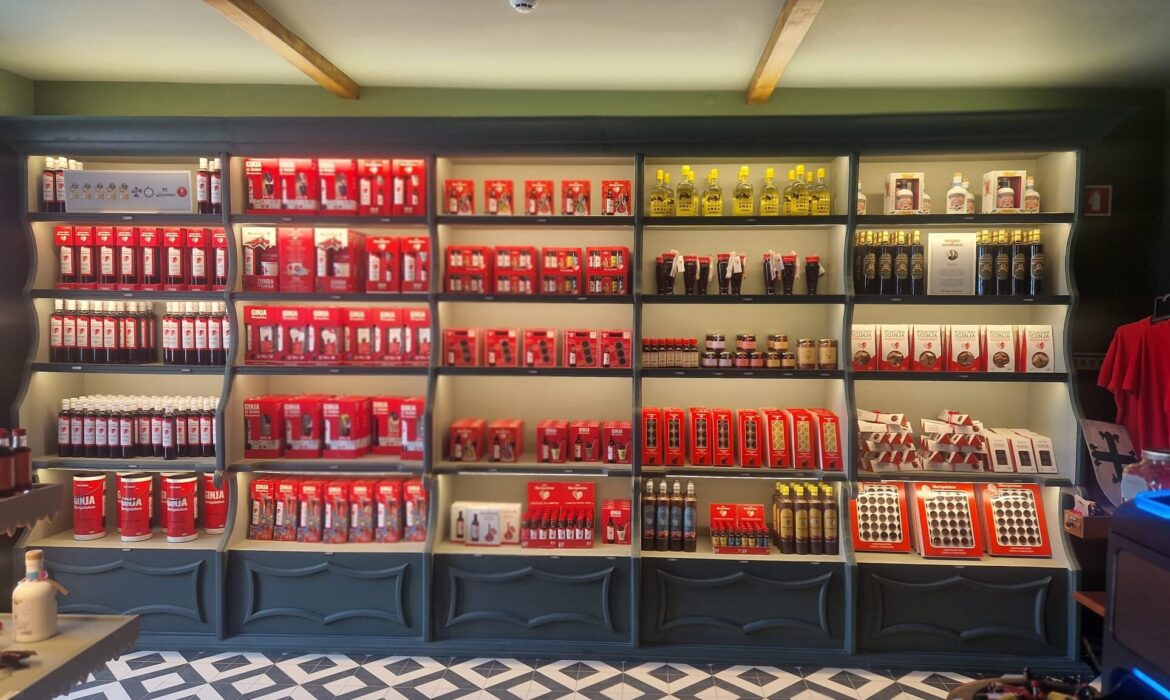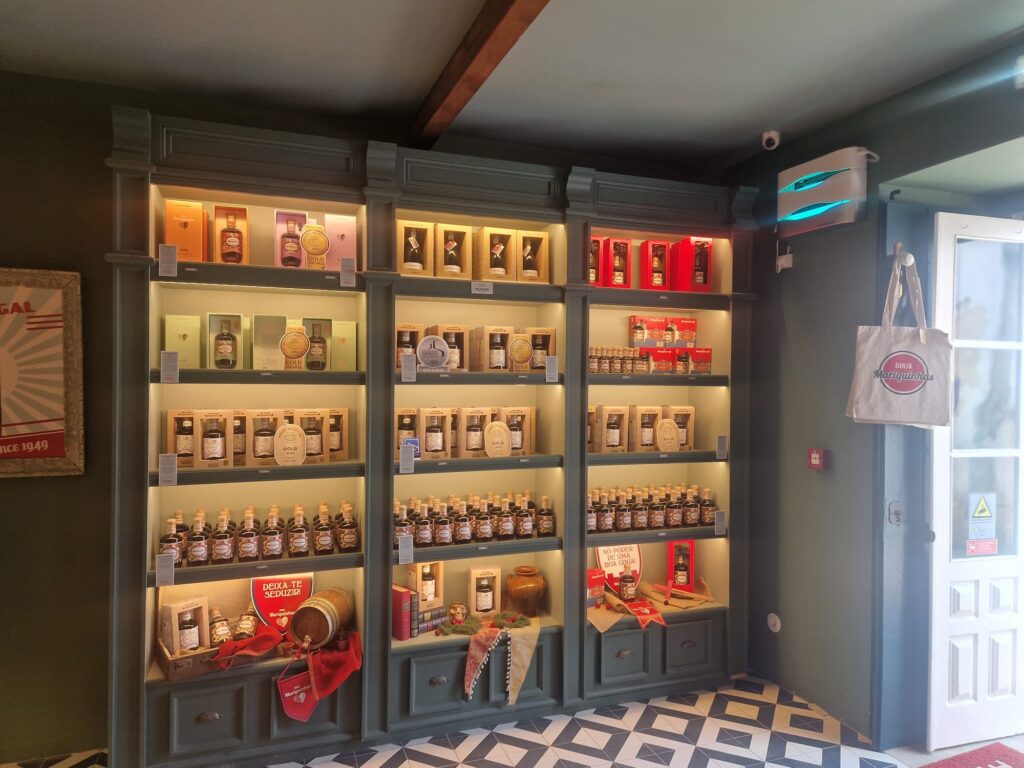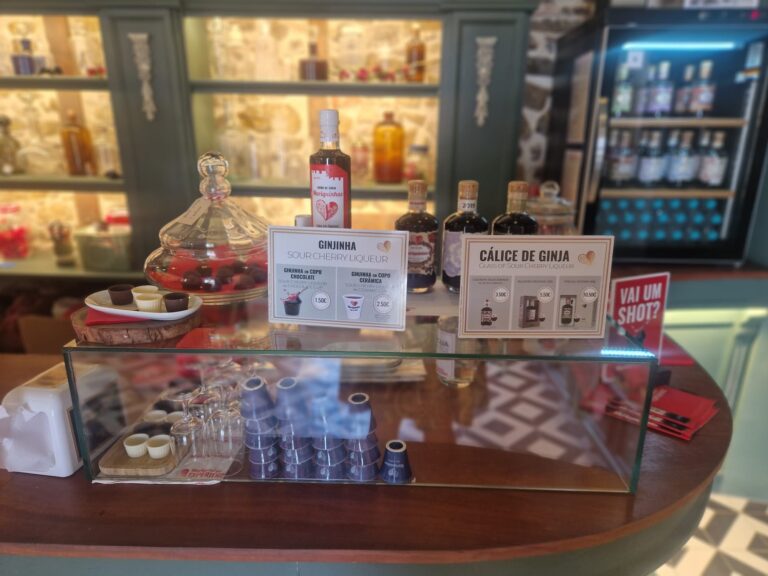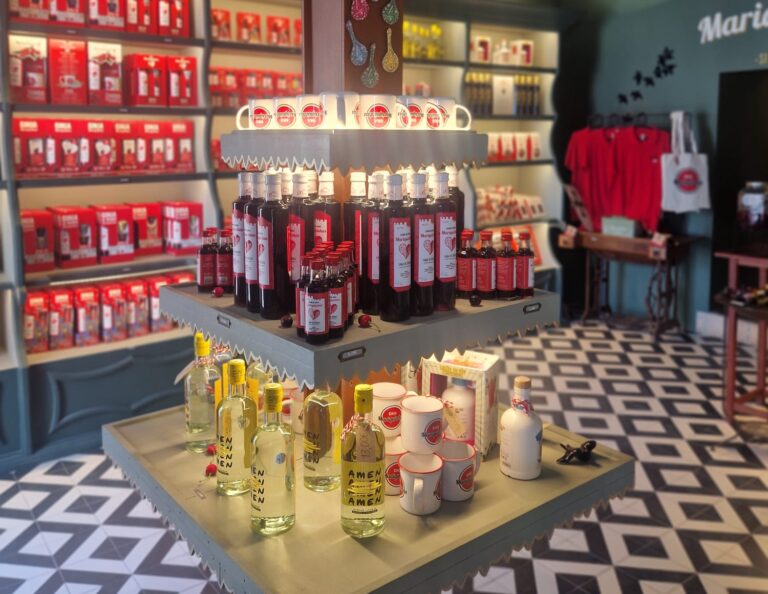
By Clare Bailey, Retail Expert
I might be on holiday… but if you know me, you know I never stop thinking about retail.
Right now, I’m in Óbidos, a small, cobbled town just north of Lisbon, Portugal and I’ve just walked into what I can only describe as the perfect retail experience, which is high praise from someone who has spent the last 30 years in retail! It’s a shop dedicated to Ginja (G-I-N-J-A), a sweet-sour cherry liqueur steeped in centuries of Portuguese tradition. The shop is called Ginja Mariquinhas.
Plenty of places here sell Ginja. But this one? It’s different. It’s unforgettable.
From the outside, it draws you in. Through the door, it becomes something else entirely – part shop, part bar, part mini-museum.
The Anatomy of a Perfect Retail Experience
The moment you enter, every sense is engaged:
- Sight: Rows of beautifully displayed bottles, gift sets like little treasure chests, elegant signage, and a bar that silently says “stay a while.”
- Smell: A rich, fruity sweetness in the air, instantly recognisable and inviting.
- Taste: Samples served in tiny chocolate cups (yes, you eat the cup).
- Touch: Packaging so tactile you want to pick it up.
- Sound: A low hum of conversation, the clink of glasses, the occasional laughter of customers enjoying themselves.
And here’s the clever bit — they’ve layered it all in history. Old memorabilia, vintage adverts, and displays that tell the Ginja story. It’s not just product, it’s provenance. You leave knowing more than when you came in. You’ve experienced something.
Why This Works So Well
This shop doesn’t just sell Ginja. It sells the story of Ginja, and that’s the magic.
- Emotional Connection
People buy with emotion first and logic second. By connecting the product to heritage, pride, and local culture, the shop turns a bottle of liqueur into a piece of Portugal you can take home. - Multi-Sensory Immersion
Online retail can’t replicate taste, smell, and touch. In-store, these senses are powerful drivers of dwell time and spend. - Zoned Experience
The space flows naturally – from intrigue at the door, to sampling at the bar, to browsing the retail displays, to checkout. It’s frictionless and deliberate. - Inclusive Product Offer
Yes, the traditional Ginja is the star. But they’ve innovated – Ginja spritzes, sour cherry lemonade for non-drinkers, truffles, gift packs. They’re appealing to more customers without diluting the brand. - Perceived Value
Prices are fair. Not bargain basement, but not tourist-trap expensive either. Customers leave feeling they’ve had both a treat and good value – the holy grail of retail.

The Sardine Lesson
A few streets away, another shop is pulling off the same strategy – only with tinned sardines. Yes, sardines.
They’ve turned canned fish into theatre: miniature fairground rides, animatronics, dramatic lighting, and displays worthy of a gallery. You can’t not go in. People are filming, photographing, smiling. And yes, buying.
The product hasn’t changed. The experience has. And that’s everything.

What UK Retailers (and Service Businesses) Can Learn
You don’t need a centuries-old tradition or a postcard-perfect setting to make this work. The same principles can be applied anywhere:
Lead with a Story
Why do you exist? What’s special about your product or process? Tell it everywhere – visually, verbally, physically.
- Example – Clothing Boutique: Share the story of where your fabrics come from, the craft behind your garments, or the inspiration for each seasonal collection. Use in-store displays, signage, and staff knowledge to make every piece feel unique.
- Example – Beautician: Tell the origin story of your treatments, the benefits of the products you use, and why your process is different. A “rituals” menu can make treatments feel more like experiences than transactions.
- Example – Accountants: Share the history of your firm, your expertise in specific sectors, and client success stories. Show how your advice helps clients grow — turning dry numbers into human impact.
Engage the Senses
Even if taste and smell aren’t relevant, think about sound, texture, and sight. Music, lighting, and touchpoints matter.
- Example – Clothing Boutique: Soft lighting, tactile fabrics within reach, a subtle scent in the fitting rooms, curated playlists to set the mood.
- Example – Beautician: Diffused essential oils, calming music, and an inviting, warm-toned treatment space that instantly signals “relax.”
- Example – Accountants: This might not be scent diffusers and playlists — but you can create a sensory brand through clean, modern office design, welcoming reception areas, branded stationery, and thoughtful refreshments.
Guide the Journey
Lay out your space – physical or digital, so customers are naturally led through a path of discovery, trust, and commitment.
- Example – Clothing Boutique: Place statement pieces at the entrance, then guide customers through coordinated outfits, accessories, and “final touch” impulse buys near checkout.
- Example – Beautician: Have testers and samples by reception, consultation areas away from the till for privacy, and a clear journey from welcome to treatment to checkout.
- Example – Accountants: Structure your onboarding process so that prospects start with a free diagnostic call, move through a needs analysis, and then receive a tailored proposal — no dead ends, no confusion.
Surprise and Delight
One unexpected moment (a free sample, a quirky display) can make the experience memorable and shareable.
- Example – Clothing Boutique: Offer a free scarf styling demo or a mini glass of fizz during seasonal launch events.
- Example – Beautician: Give first-time customers a complimentary mini hand massage or sample-size product to take home.
- Example – Accountants: Send clients a personalised tax deadline calendar, or a quarterly “business health check” summary with tailored recommendations.
Blend Theatre and Commerce
Don’t just put products (or services) on display, make them part of an experience that’s worth talking about.
- Example – Clothing Boutique: Create live window displays where staff style mannequins in real time.
- Example – Beautician: Offer live demonstrations of new facial techniques or makeup trends on certain days.
- Example – Accountants: Host themed workshops (e.g. “Spring Clean Your Business Finances”) with interactive Q&A and real-time mini audits.

Nobody “needs” Ginja, novelty sardines, another dress, a manicure… or even an accountant. But when the experience is done right, people want it and they’re happy to pay for it.
Even on holiday, I’m reminded that this is what turns a transaction into a relationship, and a shop into a destination. And that’s where the real wealth in retail lies.

If retail had a Bat-Signal, Clare’s phone would be the one lighting up. From BBC studios to boardrooms, she’s the expert people call when they need the truth – fast, sharp, and without the waffle.
Retail is tough right now, but with Clare in your corner, you don’t just survive, you strategise, adapt, and grow.
Got a retail challenge? Get in touch – Clare’s probably seen (and solved) it before.
See more about Clare and the rest of the team on our Meet The Team page.
If you’ve enjoyed reading this you may also find these articles interesting:
Boosting Sales & Footfall: Proven Retail Consultancy Tips for UK Businesses
Silent Selling In-Store: Creating an Aspirational Shopping Experience


